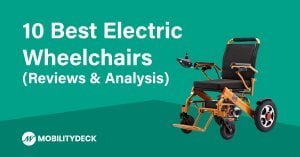- Assisted Living, Senior Living
- Our Quality Guarantee
- Last Updated October 10, 2023

Nursing Homes vs Assisted Living Facilities: What Sets Them Apart?
Nursing homes and assisted living facilities are 2 options for senior care and senior housing. But you may be wondering how they differ. The easiest way to explain the different options is that Nursing Homes are mainly caring facilities that provide housing, while Assisted Living is one of the senior housing options that provide a level of care.
In This Article
Assisted Living Facilities (ALFs) vs. Nursing Homes: Key Differences
| Criteria | Assisted Living Facilities | Nursing Homes |
| Primary Focus | Assistance with daily living activities and social engagement. | Comprehensive medical care and support for more complex health needs. |
| Level of Medical Care | Basic medical care and medication management. | Intensive, 24/7 medical care including specialized services. |
| Staffing | Caregivers and limited nursing staff. | Higher nurse-to-resident ratio with specialized medical professionals on staff. |
| Living Spaces | More homelike, with options for private or shared apartments. | More clinical, often shared rooms equipped for intensive medical care. |
| Activities | Emphasis on social, recreational, and wellness activities. | Activities tailored to residents’ medical conditions and physical abilities. |
| Cost | Generally lower, ranging from $2,000 to $5,000 per month. | Higher, often between $7,000 to $10,000 per month due to intensive medical care. |
| Payment Options | Primarily private pay and long-term care insurance; limited Medicaid coverage. | Medicare, Medicaid, private pay, and insurance due to medical service provision. |
| Regulations | Regulated by the state, with less stringent medical oversight. | Federally and state-regulated with strict medical and safety standards. |
| Admission Requirements | For seniors needing assistance with ADLs but not intensive medical care. | For individuals requiring constant medical attention and support. |
| Freedom and Independence | Residents often have more freedom and options for personalization. | Structured care plans and schedules due to the focus on medical needs. |
| Family Involvement | Encouraged and flexible, with an emphasis on social interaction. | Also encouraged but may be structured due to medical and care schedules. |
What Do Assisted Living Facilities Provide?
So, you’re thinking of making a move, and the family home is starting to feel like it’s a tad too much, or perhaps not enough? Assisted living facilities could be your golden ticket. Imagine living a stone’s throw away (5-10 miles) from hospitals and your favorite shopping spots. Nice, right?
Navigating the Rulebook
You might be wondering, “How do I know if they’re up to snuff?” Well, every facility is like an open book under the strict gaze of state regulations. Remember the dread of report card day? That’s every day for these places, with annual inspections ensuring everything is top-tier.
Meet Your New Crew
Staff to resident ratio – it’s a big deal. In many places, it’s as cozy as 1:5. It means someone’s always got your back, helping turn those daily tasks into something more bearable and enjoyable.

All About the Perks
Wi-Fi, cable TV, emergency call systems, rooms that don’t just meet but exceed ADA standards – it’s not just about living but living with an extra dash of comfort and security. Could you get used to that?
Every Day’s a Party
Well, it’s not a wild party, but with 20-30 organized activities each month, boredom isn’t on the guest list. Ever dreamed of trying out art workshops, fitness classes, or social events? Here’s your chance.
A Menu to Relish
Three balanced meals and snacks that aren’t just filler but a culinary experience. Got special dietary needs? They’ve got it covered. Imagine a world where your taste buds and health are both kings. Tempting?
Special Touch of Care
If dementia care is a concern, breathe easy. About 42% of ALFs are equipped with specialized units, and the staff? They’re not just trained; they’re wizards in cognitive care practices.
Let’s Talk Dollars and Cents
Private pay, long-term care insurance, and even Medicaid waivers in some lucky states – your wallet won’t be crying itself to sleep. And, surprise, surprise – sometimes those monthly fees are up for a friendly chat.
Monthly costs?
They’re dancing $2,000 and $5,000 for standard care. Need something extra special? It’s a bit more, but value, care, and quality are the names of the game.
Safety First, Always
Have you ever wished for a guardian angel? With 24/7 emergency systems and a response faster than you can say “help” (under 5 minutes, to be exact), you’re in safe hands.
Your Health, Your Rules
Health and wellness isn’t a checkbox but a journey here, with on-site monitoring, medication management, and a VIP pass to local health providers’ services. Personalized care – sound good?

Need a Lift?
Transportation isn’t a luxury but a given. Scheduled rides mean your world got a lot bigger. No car keys are required.
Your Space, Your Way
Choose from cozy studios to lavish two-bedroom units. It’s not just about square footage (ranging from 400 to 1,200 sq ft) but about finding your slice of paradise.
A Community of Your Choosing
From intimate 5-10 resident homes to buzzing 300-resident communities, it’s about finding your tribe. Big, small, somewhere in between – where do you see yourself?
Your Voice Matters
Rights, feedback, and complaints aren’t just heard; they’re amplified. It’s a place where your voice doesn’t echo in emptiness but molds the space around you.
Expert Care with a Personal Touch
Staff aren’t just staff. With 15-20 hours of annual training, they’re companions in your journey, blending expertise with that personal touch we all crave.
Your Family, Part of the Journey
Visiting hours aren’t just flexible; they’re as open as the front door of your family home. Overnight stays, updates – your family isn’t just welcome; they’re part of the journey.
A Comprehensive Overview of Assisted Living Facilities
| Features/Services | Details/Description |
| Location | Facilities are typically located within 5-10 miles of major hospitals and shopping centers to ensure accessibility and convenience. |
| Regulation | Adhere to specific state regulations, with annual inspections to validate compliance with health, safety, and operational standards. |
| Staff | Staff-to-resident ratio is often regulated, e.g., 1:5 for direct care staff in many states, ensuring personalized attention. |
| Amenities | Offer amenities like Wi-Fi, cable TV, and emergency call systems; rooms furnished according to the latest ADA standards. |
| Activities | Provide 20-30 organized activities monthly, including fitness classes, art workshops, and social events. |
| Meals | Serve 3 balanced meals daily, with 2-3 snack options, accommodating specific dietary restrictions like low-sodium or gluten-free. |
| Specialized Care | Around 42% of ALFs have specialized dementia care units, with staff trained in cognitive care practices. |
| Payment Options | Accept private pay, long-term care insurance, and in some states, Medicaid waivers; monthly fees can sometimes be negotiable. |
| Cost | Monthly costs range from $2,000 to $5,000 for standard care; specialized care units can be 20-30% more expensive. |
| Emergency Systems | Equipped with 24/7 monitored emergency call systems, with response times typically under 5 minutes. |
| Health and Wellness | Offer on-site health monitoring, medication management, and partnerships with local health providers for specialized care. |
| Transportation | Provide scheduled transportation to medical appointments and shopping centers, usually included in the monthly fee. |
| Living Spaces | Offer studio to two-bedroom units, ranging from 400 to 1,200 sq ft, with options for private or shared rooms. |
| Resident Capacity | Facilities range from small, home-like settings with 5-10 residents to larger communities with up to 300 residents. |
| Resident Rights and Advocacy | Residents have rights to privacy, dignity, and autonomy, with accessible avenues for feedback and complaints. |
| Staff Training and Qualifications | Staff undergo at least 15-20 hours of training annually, including emergency response, medication management, and resident rights. |
| Personalization of Care | Care plans are reviewed and updated every 6-12 months, or upon a significant change in the resident’s health. |
| Family and Visitor Policies | Visiting hours are typically flexible, with overnight stays allowed; communication protocols established for family updates. |
In assisted living facilities, not just the bricks and the beds but the hearts and the hands that make it a home. Ready to enter a world where every day combines care, community, and celebration?
FAQ
Can you be in a wheelchair in assisted living?
- Assisted living facilities are required by law to accommodate wheelchair users under the Americans with Disabilities Act (ADA) and Fair Housing Act. However, some facilities still try to deny access.
- Ideal assisted living residents who use wheelchairs should be able to transfer themselves or be transferred with help from one caregiver. Completely bedridden residents are usually not accepted.
What Do Nursing Homes Offer?

Finding the Right Spot: Location & Accessibility
When considering a nursing home, location is more than a pin on the map; it’s about convenience, connection, and community. Most nursing homes, precisely 60%, are snuggled in the city’s heart. This isn’t by accident; it’s so that top-notch medical facilities are just a hop, skip, and a jump away, and family visits are as easy as pie. Imagine having the pulse of the city’s vibrancy and the peace of knowing expert care is at your fingertips.
The Rule Book: Strict Regulatory Oversight
Every nursing home is like a well-tuned orchestra, playing by the rules of both federal and state maestros. Each year, these homes pull back the curtains for inspections, with a whopping 90% under the microscope of over 150 specific criteria. It’s like a health check-up for the home, ensuring every ‘T’ is crossed and every ‘I’ dotted for safety and quality care.
Professional Medical Staff
In nursing homes, every resident is a VIP, and the staff are the attentive entourage. With a golden ratio of 1:5 for skilled nurses and 1:10 for nursing assistants, attention is personal, and care is a given. An RN holds the fort for 8 hours daily, ensuring a steady hand and a listening ear on deck.
Amenities Tailored for Medical Needs
Imagine a space that feels like home but sprinkles with specialized medical equipment’s magic. Over 80% of nursing homes offer private rooms, each adapted for physical disabilities and crafted for comfort, ensuring each resident feels snug and secure.
Engaging Activities
Boredom is a word that’s been kicked out of the vocabulary in nursing homes. Residents have a buffet of 5-7 daily activities. These aren’t just time-fillers; they are bridges to physical and mental wellness crafted by on-site maestros of fun and engagement.
Nutritional Care
With dietitians as the unsung heroes in 95% of facilities, every meal is more than food; it’s a melody of flavors tailored to tickle the taste buds while honoring individual dietary needs. Whether it’s a diabetic, low-sodium, or no-allergen zone, every plate is a personalized masterpiece.
Specialized Health Services
In over 75% of nursing homes, specialized health services aren’t just a feature but a promise. Imagine a world where dementia care, cardiac rehab, and respiratory therapy are not just words but personalized pathways to wellness, each plan sculpted and adjusted to fit like a glove.
The Price Tag: Costs & Funding
Quality care has its price tag, averaging between $7,000 and $10,000 monthly. But here’s the silver lining – about 62% of residents wave the magic wand of Medicaid aid, and Medicare steps in for specific care types, turning the financial mountain into a manageable molehill.
Safety First: Safety Protocols
Sleep easy, knowing that safety isn’t just a protocol but a pledge. With 24/7 monitoring and biannual fire safety checks, it’s a fortress of safety where fall prevention isn’t just a plan but a practice, honed to perfection in 90% of facilities.
Continuous Health Monitoring
In nursing homes, health isn’t just monitored; it’s cherished. Monthly assessments are the norm, with care plans flexible and responsive, dancing to each resident’s needs. And with direct ties to nearby hospitals, emergency response is as swift as the wind.

Family Engagement Policies
Family isn’t just welcomed; it’s wanted. With open visiting hours and 85% of homes rolling out the red carpet for overnight guests, it’s a family affair. And with active family councils in 70% of homes, it’s a partnership where voices are heard and valued.
Empowerment: Resident Rights
In nursing homes, residents aren’t just cared for; they are empowered. Rights to privacy, dignity, and choice aren’t just offered; they are enshrined, with resident councils standing as sentinels of these sacred trusts.
Staff Training
Staff in nursing homes aren’t just employees; they are lifelong learners. With a minimum of 12 annual training hours, over 80% of homes take the extra mile, turning every moment into a masterpiece of care, skill, and compassion.
Individualized Care Plans
Every resident is a world unto themselves, and in nursing homes, each world is honored. Care plans aren’t just made; they are woven, stitch by stitch, reviewed, and refreshed bi-monthly to ensure every resident doesn’t just survive but thrives.
A Comprehensive Overview of Nursing Homes
| Features/Services | Details/Description |
| Location | Often found in residential areas, close to hospitals and city centers for easy access. |
| Regulation | Strictly overseen by state and federal laws, with regular, thorough inspections. |
| Staff | Higher 1:3 staff-to-resident ratio. Includes nurses and certified assistants. |
| Amenities | Equipped with medical facilities, safety features, and areas for social activities. |
| Activities | Offers therapeutic and social activities, tailored to residents’ health conditions. |
| Meals | Specialized meals designed by dietitians, catering to specific dietary and medical needs. |
| Specialized Care | Provides complex medical and rehabilitative care for severe health issues. |
| Payment Options | Funded through Medicaid, Medicare, insurance, and out-of-pocket. All-inclusive cost structure. |
| Cost | Monthly costs range from $6,000 to $10,000, varying by location and care level. |
| Emergency Systems | Advanced emergency equipment and trained staff ensure immediate response. |
| Health and Wellness | On-site medical care, routine check-ups, and specialized therapies available. |
| Transportation | Transportation for off-site medical appointments included. |
| Living Spaces | Shared rooms with medical and safety equipment installed. |
| Resident Capacity | Houses a larger number of residents to provide efficient medical care. |
| Resident Rights and Advocacy | Defined rights for privacy and care, with set protocols for complaints. |
| Staff Training and Qualifications | Staff are trained in geriatric and emergency care. |
| Personalization of Care | Tailored medical and nursing care plans, regularly reviewed and updated. |
| Family and Visitor Policies | Set visiting hours and protocols, with family involvement in care planning. |
Note: Each nursing home can be different, so it’s always good to check the specific details for each place.
Find a nursing home in your area
In the world of nursing homes, every corner, every smile, and every hand blends professional care, personalized attention, and a promise of a life lived in color, comfort, and community. It’s more than a place to stay; it’s a home where every resident is a story, and every story is honored.
Final Thoughts
Navigating the world of assisted living facilities and nursing homes can feel like stepping into a garden teeming with different flowers – each beautiful, each unique, each offering something special. It’s all about finding that one blossom, or in this case, a home, that feels just right for you or your loved one.
Assisted Living Facilities are like those gardens where flowers have the space to stretch wide and reach for the sun. It’s a space of freedom, sprinkled with a helping hand whenever needed. Think of it as a neighborhood where folks have their own space but are always just a stone’s throw away from friends, help, and a hearty laugh.
Nursing Homes, on the flip side, are those cozy, well-tended greenhouses where each flower receives individual attention, ensuring they thrive. It’s personal, it’s intensive, and it’s all about ensuring that medical needs don’t just get met but are wrapped in a bow of compassion and care.
So, how do you choose between the garden and the greenhouse? Well, it boils down to the needs and wants of that special person in your life looking for their next home. It’s a mix of the medical attention they require and the lifestyle they’re reaching out for.
Remember, there’s no rush. Take a walk, have those heart-to-hearts, and let the choices unfurl naturally. After all, whether it’s the open spaces of assisted living or the cozy embrace of a nursing home, each offers a blend of care, respect, and warmth that turns a building of bricks and mortar into a home of hearts and hopes.
So here’s to choices, journeys, and finding that perfect spot where your loved one doesn’t just live but thrives. Every question, every visit, every quiet moment of reflection is a step closer to a place that feels less like a facility and more like home – warm, welcoming, and woven with care.
Articles You May be Interested In:



















